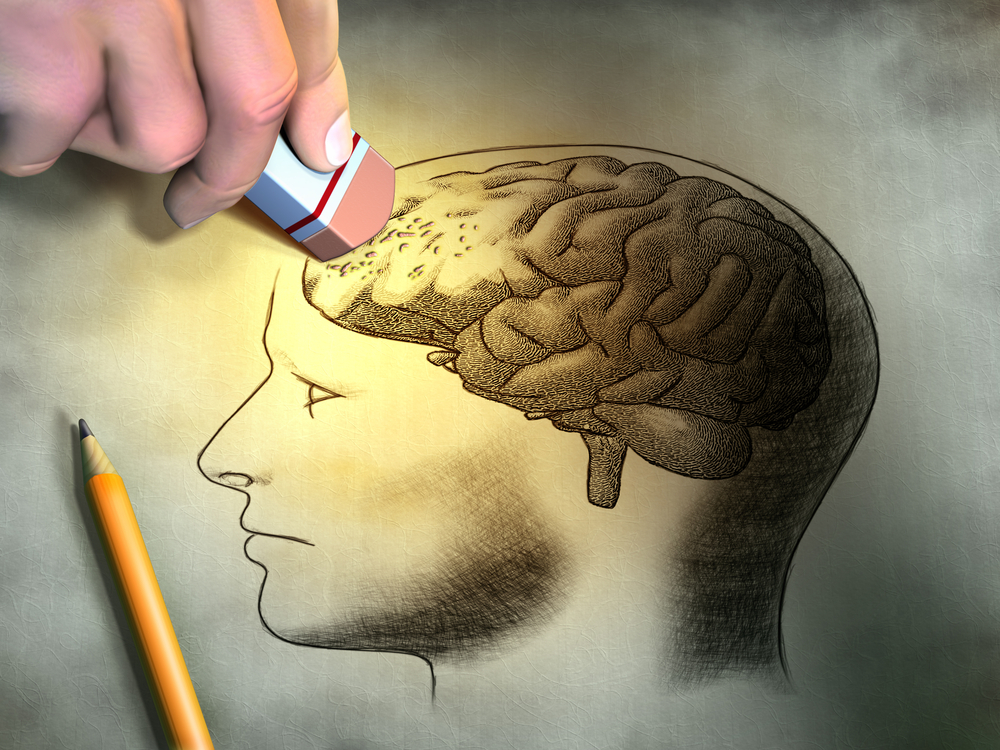Blog
- Surgical Treatment of TBI in Older Adults
- By Jason von Stietz, M.A.
- November 30, 2015
-

Getty Images Researches at the Helsinki University Hospital Department of Neurosurgery investigated these use of surgery to treat acute subdural hemotomas in patients over the age of 75. Previously, older adult patients were not treated surgically, as the rates of patents who survived and recovered successfully were low. However, new findings show that older adult patients who lived independently before the accident, were not taking anticoagulants, and who arrived at the hospital conscious received were treated successfully through surgery. The study was discussed in a recent article in NeuroScientistNews:
According to a study completed at the Helsinki University Hospital Department of Neurosurgery, even patients over the age of 75 may recover from severe traumatic brain injury. This is the first study to describe the results of surgically treated elderly patients with acute subdural hematomas.
It is generally accepted that elderly patients who suffer from an acute subdural hematoma should not be treated surgically, as few survive and even fewer recover to an independent life. However, the world's population is rapidly aging leading to an increased rate of fall accidents. In the worst case, falling may result in brain hemorrhage.
Age is one of the most significant outcome predictors in patients with traumatic brain injury. If the patient is young, an acute subdural hematoma is normally treated through a neurosurgical operation. However, even among young patients, mortality and significant morbidity are highly common, despite surgical treatment. In older patients, the success rate of the surgery are made worse by the fact that many patients are typically using oral anticoagulant medications to treat other cardiovascular diseases.
The Neurosurgical Department in Helsinki University Hospital has been an exception in its policy to also treat elderly patients with acute subdural hematomas surgically. Researchers from the University of Helsinki and Helsinki University Hospital have now determined how the patients' functional status before the injury and the use of oral anticoagulant medications influence the prognosis of patients 75 years or older operated on for an acute subdural hematoma.
The study showed that no patients who had been brought to hospital unconscious, who had not been independent before the trauma, or who had used anticoagulants were alive at one year after the surgery.
"What was surprising, however, was that patients who were conscious at presentation, who were not using anticoagulants or were independent before the operation, recovered quite well. The expected lifespan of these patients was comparable to their age-matched peers," says MD, PhD Rahul Raj, one of the main authors.
"One should be careful to make to strong conclusions from such a small number of patients," Raj points out, "but it seems that in approximately half of all cases, even elderly patients may benefit from surgery and recover to an independent life. It is important to note that included patients had an isolated acute subdural hematoma with no injuries to the brain tissue itself. This means that the results cannot be applied to patients with contusions or other intracranial injuries, whose treatment and prognosis are different."
The decision to operate should not be based on age alone
According to Raj, the study throws new light on the old assumption that surgical treatment of the elderly is not a sensible course of action: "The decision to treat through surgery should not be based on age alone, even though this is common."
Surgery of an acute subdural hematoma followed by intensive care and rehabilitation involve major costs and can cause significant suffering to patients and relatives. Thus, it is important to perform surgery on only the patients who are likely to benefit from it.
"But how do you define a bad prognosis? If only one in ten patients recovers sufficiently to live at home, is the treatment worthwhile? If half of the treated patients die within the year, is the treatment worthwhile? This is not a medical decision," the researchers emphasize. They believe that in the future, surgical treatment will be increasingly restricted to patients with the highest likelihood of recovering.
Read the original article Here
- Comments (2)
- Brain's Stress Circuitry Involved in Alzheimer's Disease Treatment
- By Jason von Stietz, M.A.
- November 27, 2015
-

Getty Images Researchers at the University of San Diego School of Medicine investigated the use of a small molecule drug in preventing and treating Alzheimer’s disease in mice. Researchers found that the drug significantly reduces activity of the stress circuitry in the brains of the mice and resulted in the prevention of neurodegeneration and cognitive impairment. The study was discussed in a recent article of NeuroScientistNews:
The findings are described in the current online issue of the journal Alzheimer’s & Dementia: The Journal of the Alzheimer’s Association.
The results underscore the complexity and diversity of AD, whose causes appear to be a mix of genetic, lifestyle and environmental factors. Previous research has shown a link between the brain’s stress signaling pathways and AD. Specifically, the release of a stress-coping hormone called corticotropin-releasing factor (CRF), which is widely found in the brain and acts as a neurotransmitter/neuromodulator, is dysregulated in AD and is associated with impaired cognition and with detrimental changes in tau protein and increased production of amyloid-beta—protein fragments that clump together and trigger the neurodegeneration characteristic of AD.
“Our work and that of our colleagues on stress and CRF have been mechanistically implicated in Alzheimer’s disease, but agents that impact CRF signaling have not been carefully tested for therapeutic efficacy or long-term safety in animal models,” said the study’s principal investigator and corresponding author Robert Rissman, PhD, assistant professor in the Department of Neurosciences and Biomarker Core Director for the Alzheimer’s Disease Cooperative Study (ADCS).
“The novelty of this study is two-fold: We used a preclinical prevention paradigm of a CRF-antagonist (a drug that blocks the CRF receptor in brain cells) called R121919 in a well-established AD model – and we did so in a way that draws upon our experience in human trials. We found that R121919 antagonism of CRF-receptor-1 prevented onset of cognitive impairment and synaptic/dendritic loss in AD mice.”
In other words, the researchers determined that modulating the mouse brain’s stress circuitry (without actually changing the normal response) mitigated generation and accumulation of amyloid plaques widely attributed with causing neuronal damage and death. As a consequence, behavioral indicators of AD were prevented and cellular damage was reduced. The mice began treatment at 30-days-old – before any pathological or cognitive signs of AD were present – and continued until six months of age.
One particular challenge, Rissman noted, is limiting exposure of the drug to the brain so that it does not impact the body’s ability to response to stress. “This can be accomplished because one advantage of these types of small molecule drugs is that they readily cross the blood-brain barrier and actually prefer to act in the brain,” Rissman said. Drugs like R121919 were originally designed to treat generalized anxiety disorder, irritable bowel syndrome and other diseases, but failed to be effective in treating those disorders.
“Rissman’s prior work demonstrated that CRF and its receptors are integrally involved in changes in another AD hallmark, tau phosphorylation,” said William Mobley, MD, PhD, chair of the Department of Neurosciences and interim co-director of the Alzheimer’s Disease Cooperative Study at UC San Diego. “This new study extends those original mechanistic findings to the amyloid pathway and preservation of cellular and synaptic connections. Work like this is an excellent example of UC San Diego’s bench-to-bedside legacy, whereby we can quickly move our basic science findings into the clinic for testing,” said Mobley.
Rissman said R121919 was well-tolerated by AD mice (no significant adverse effects) and deemed safe, suggesting CRF-antagonism is a viable, disease-modifying therapy for AD. Rissman noted that repurposing R121919 for human use was likely not possible at this point. He and colleagues are collaborating with the Sanford Burnham Prebys Medical Discovery Institute to design new assays to discover the next generation of CRF receptor-1 antagonists for testing in early phase human safety trials.
“More work remains to be done, but this is the kind of basic research that is fundamental to ultimately finding a way to cure – or even prevent – Alzheimer’s disease,” said David Brenner, MD, vice chancellor, UC San Diego Health Sciences and dean of UC San Diego School of Medicine. “These findings by Dr. Rissman and his colleagues at UC San Diego and at collaborating institutions on the Mesa suggest we are on the cusp of creating truly effective therapies.”
Read the full article Here
- Comments (3)
- The Brain Conserves Energy By Forgetting
- By Jason von Stietz, M.A.
- November 11, 2015
-

Photo Credit: Shutterstock How is it that we seem to forget information that we deem useless or unnecessary? Researchers at the Lund University in Sweden have investigated one of the brain’s mechanisms of forgetting or ignoring such information. The study was discussed in a recent article by MedicalXpress:
Our brains not only contain learning mechanisms but also forgetting mechanisms that erase "unnecessary" learning. A research group at Lund University in Sweden has now been able to describe one of these mechanisms at the cellular level.
The group's results, published in the international journal Proceedings of the National Academy of Sciences of the United States of America (PNAS), explain a theoretical learning phenomenon which has so far been difficult to understand.
The premise is that human or animal subjects can learn to associate a certain tone or light signal with a puff of air to the eye. The air puff makes the subject blink, and eventually they blink as soon as they hear the tone or see the light signal. The strange thing, however, is that if the tone and the light are presented together (and with the air puff), the learning does not improve, but gets worse.
"Two stimuli therfore achieve worse results than just one. It seems contrary to common sense, but we believe that the reason for it is that the brain wants to save energy", says brain researcher and professor Germund Hesslow.
His colleague Anders Rasmussen, who performed the present study, has previously shown that when the brain has learnt a particular association sufficiently, certain neurons that act as a brake on the learning mechanism, are activated.
"You could say that the part of the brain that learned the association (a part of the brain called the cerebellum) is telling its 'teacher': 'I know this now, please be quiet'. When the brain has learnt two associations, the brake becomes much more powerful. That is why it results in forgetting, usually only temporarily, however", explains Germund Hesslow.
Maintaining unnecessary association pathways requires energy for the brain. The researchers believe that this is the reason for the brake mechanism – even though in this case it happened to be a little too powerful.
The Lund researchers were able to describe how the nerve cells learn and forget through studies of animals, but believe that the mechanisms are likely to be the same in the human brain. Therefore, these findings are of fundamental interest for both brain researchers and psychologists. They could also be of practical interest to educators.
"Obviously, it should be important for teachers to know the mechanisms by which the brain erases the things it considers unnecessary. You do not want to accidentally activate these mechanisms", says Germund Hesslow.
Read the orginal article Here
- Comments (0)


 Subscribe to our Feed via RSS
Subscribe to our Feed via RSS